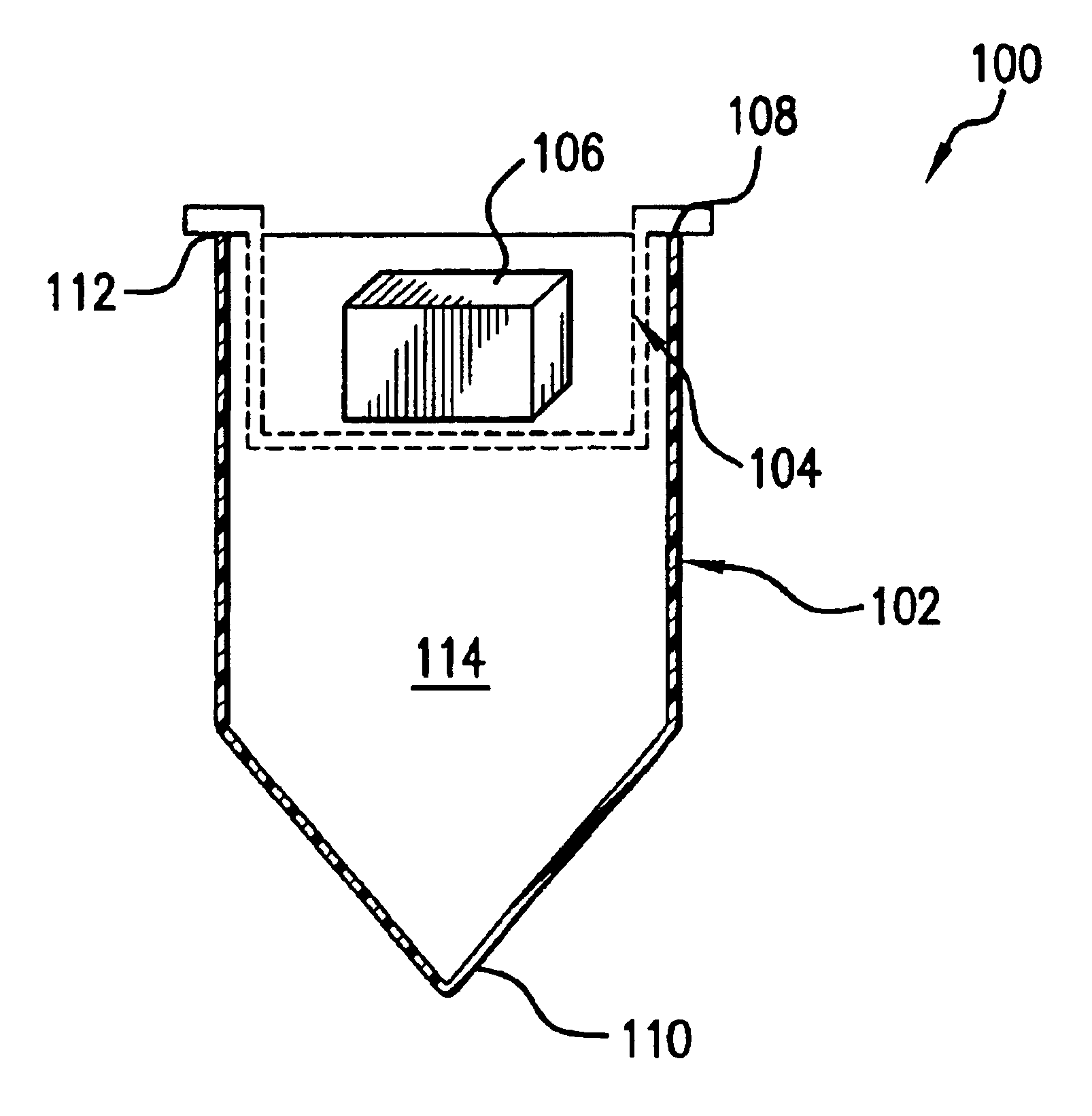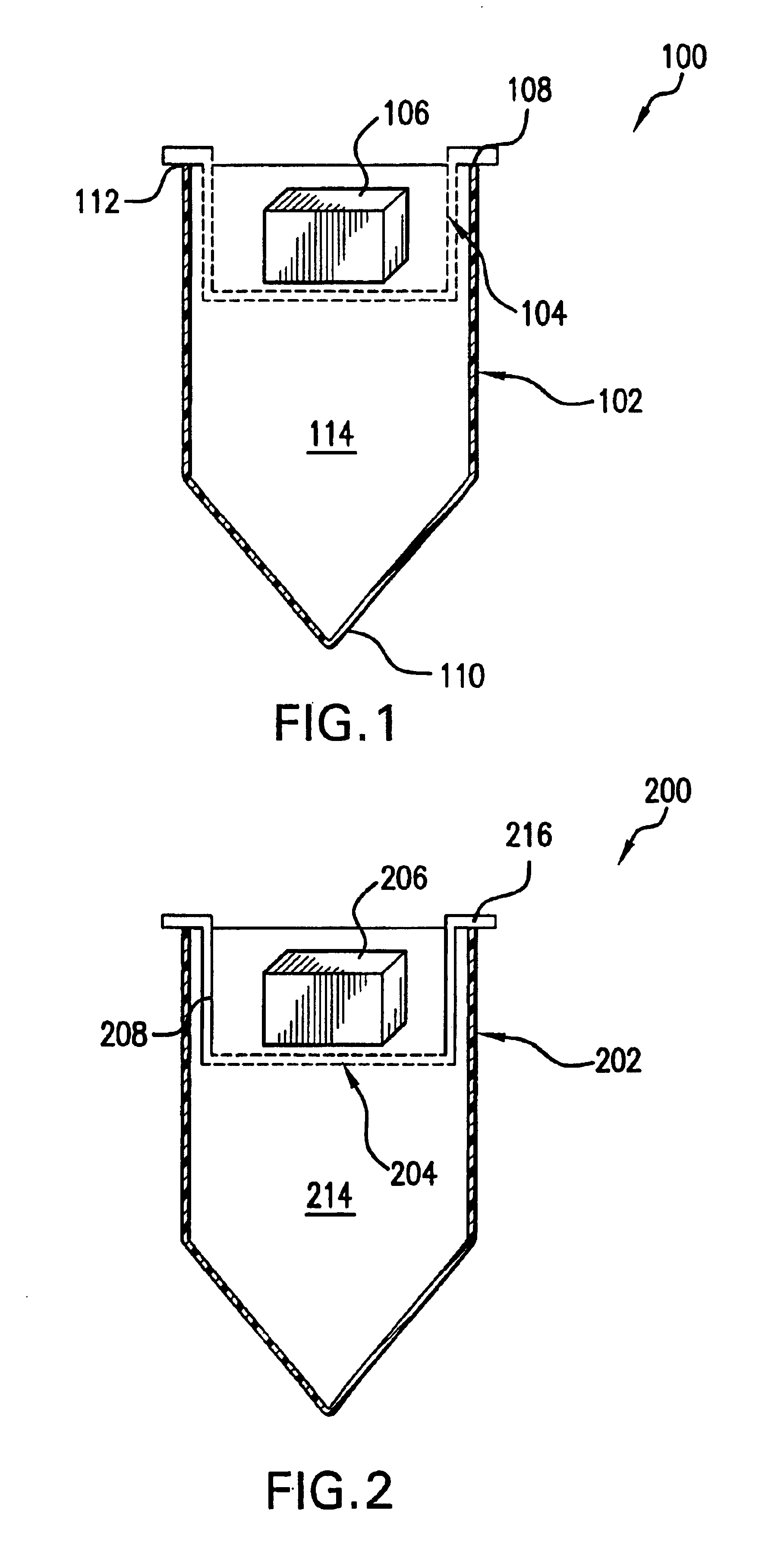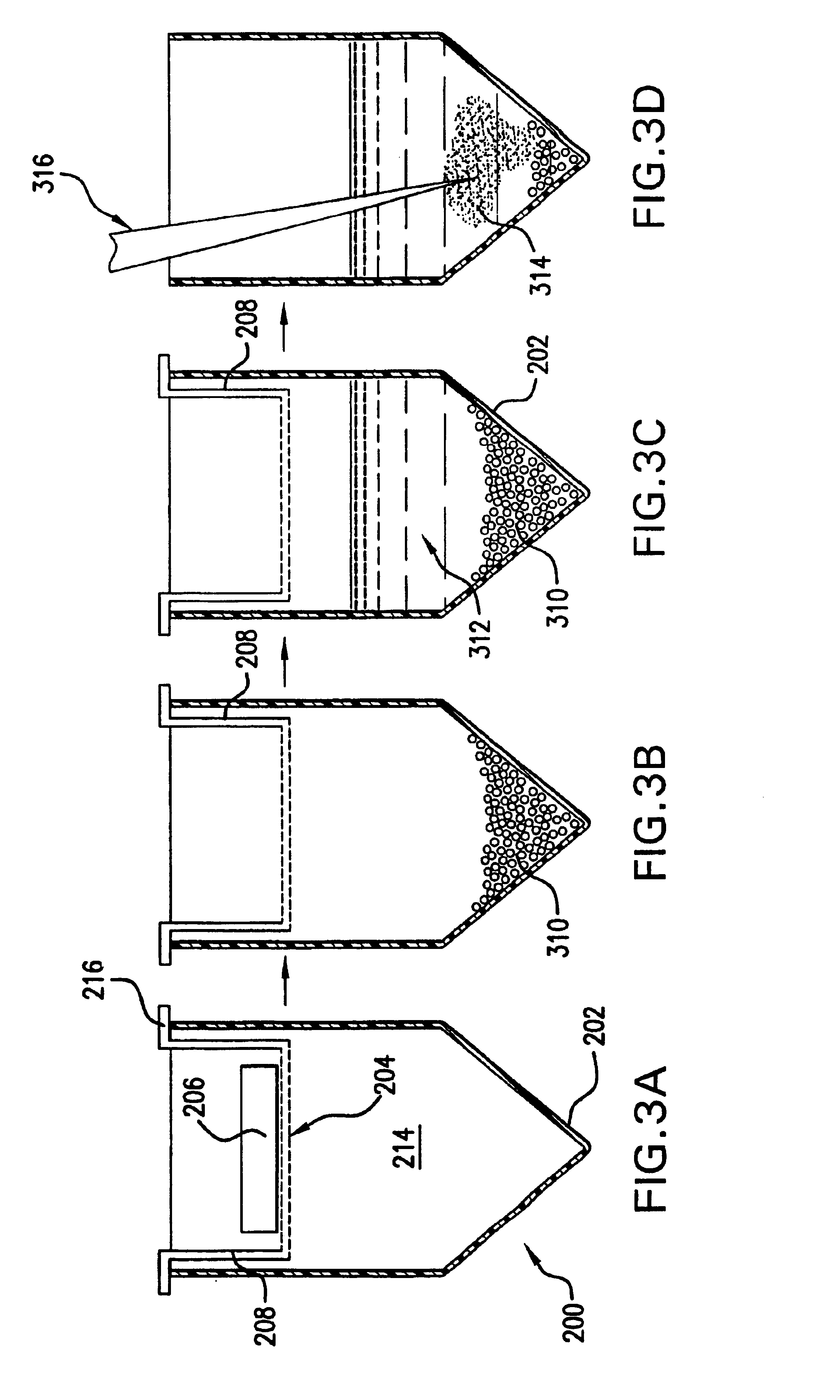Device and methods for subdividing and filtering gel material and extracting molecules therefrom
a technology of gel material and molecules, which is applied in the direction of electrodialysis, water/sewage treatment by ion exchange, centrifugal force sediment separation, etc., can solve the problems of difficult to get the molecules large molecules that cannot be easily diffused out of the gel matrix, and difficulty in removing the protein, nucleic acid or other analyte of interest from the gel, etc., to achieve rapid diffusion into or out of the gel, consistency and efficiency of important importan
- Summary
- Abstract
- Description
- Claims
- Application Information
AI Technical Summary
Benefits of technology
Problems solved by technology
Method used
Image
Examples
example 1
[0086]In one embodiment of the present invention, the trypsin is immobilized onto microscopic glass particles containing carboxylic acid groups like those available from Sigma Chemical Company, St. Louis, Mo., Catalog Number G3910, p. 482 of the 1999 catalog. Glass particles are activated using carbodimide, See S. S. Wong, above, and will bind proteins such as trypsin through the protein's amino groups. These resulting particles of immobilized trypsin are placed on a filter membrane or other similar support that will retain the particles but allow the passage of solution and protein. The immobilized trypsin membrane is placed into the lumen of the tube such that it is below the mesh layer. These layers are placed in series either by mechanically pushing the membrane into the tube such that it is lower than the nesting mechanism, or by fixing the trypsin layer to the nesting tube as described above, with reference to FIG. 5.
[0087]When the mesh and the membrane containing the immobili...
example 2
[0088]In another embodiment, the trypsin is immobilized onto the membrane itself, such as with the carboxylate modified polyvinylidene difluoride membrane described by Bienvenut et al. The treated membrane can be glued or welded into the bottom of the second nesting centrifuge tube and used in the same way as noted above.
[0089]One advantage to using immobilized trypsin, is that by immobilizing the trypsin, the enzyme will not digest other trypsin molecules as happens in solution causing the release of trypsin peptides. Trypsin autolysis is a common problem that further complicates the interpretation of mass spectra of the peptides of interest. By this means, in a single spin, the gel can be subdivided by the mesh material, which will greatly shorten the time period required to elute the proteins and cleave them into a pure aliquot of peptides ready for analysis.
[0090]The present invention also provides other processing steps for the subdivided gel. For instance, it is also commonpla...
example 3
[0092]In the present invention, a reversed phase layer can be placed beneath the immobilized trypsin so that the peptides are captured as they are produced. For example, a layer of C-18 modified glass particles may be placed on a filter membrane as described above for immobilized trypsin. The particles are available from Phenomenex, Torrance, Calif.
[0093]The immobilized C-18 membrane, as with the immobilized trypsin membrane, can be used in series or in a separate reaction from the subdividing mesh material. In fact, numerous varying membranes may be stacked in any number of custom sequences that a researcher may desire. As an example, a first mincing tube containing a mesh for subdivision of the gel can be placed atop a second nesting treating tube containing immobilized trypsin on a membrane. The sample is first centrifuged at a force sufficient to drive the gel through the mesh and subdivide it but not with a force sufficient to drive the solution through the membrane which holds...
PUM
| Property | Measurement | Unit |
|---|---|---|
| molecular weight | aaaaa | aaaaa |
| area | aaaaa | aaaaa |
| pH | aaaaa | aaaaa |
Abstract
Description
Claims
Application Information
 Login to View More
Login to View More - R&D
- Intellectual Property
- Life Sciences
- Materials
- Tech Scout
- Unparalleled Data Quality
- Higher Quality Content
- 60% Fewer Hallucinations
Browse by: Latest US Patents, China's latest patents, Technical Efficacy Thesaurus, Application Domain, Technology Topic, Popular Technical Reports.
© 2025 PatSnap. All rights reserved.Legal|Privacy policy|Modern Slavery Act Transparency Statement|Sitemap|About US| Contact US: help@patsnap.com



